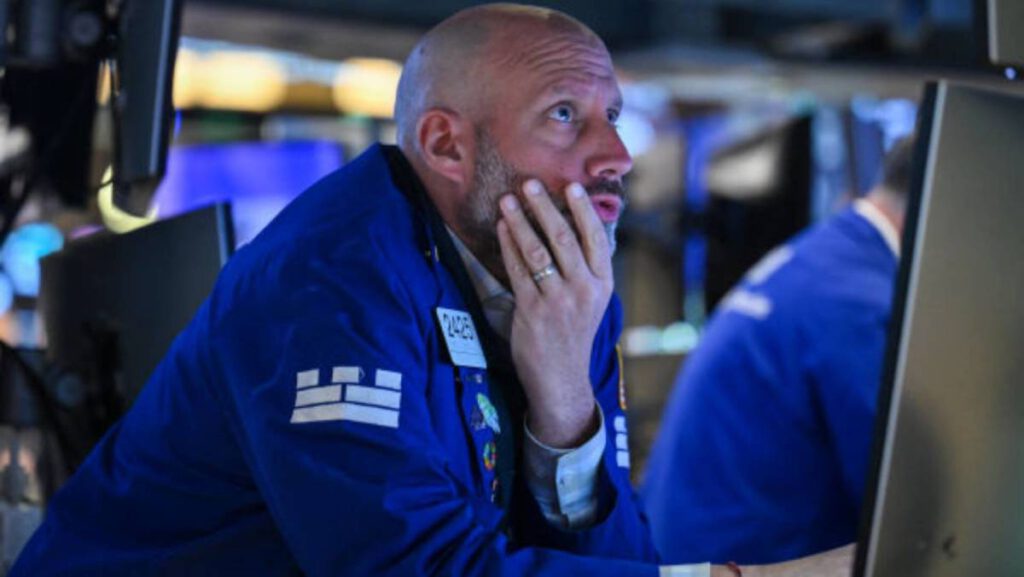The U.S. has entered a dangerous artificial intelligence (AI) race with China. This summer, both countries presented their plans for winning.
The goal? To become a dominant force in AI.
With AI already changing how military powers fight and economies function, the race is serious.
On July 23, the White House announced its AI action plan:
- Accelerate innovation.
- Build American AI infrastructure.
- Lead in international diplomacy and security.
The Networking and Information Technology R&D Program and the National Artificial Intelligence Initiative Office reported a total budget of $11.179 billion for fiscal year 2025, of which at least $1.954 billion will be spent on AI.
Considering that Bloomberg estimates tech giants such as Microsoft, Amazon, and Meta will invest $371 billion in data centers for AI in 2025, the U.S. government spending doesn’t seem that big.
And while the U.S. competes with China, large American tech companies are battling each other in yet another AI race.
Image source: Weiss/Getty Images
Goldman Sachs: Companies’ AI spending reduces share buybacks
Goldman Sachs analysts, including Ben Snider, pointed out that growing investment in AI among the S&P 500 companies is directly affecting stock buybacks.
Related: Goldman Sachs issues CPI inflation prediction
In their latest note, analysts highlighted how the AI race among tech companies is slowing a typical stock buyback’s growth per year, according to a report from Fortune.
What is a stock buyback?
Stock buybacks or share repurchases mean a company is buying back outstanding shares, reducing the number of shares in the open market. This move increases the value of remaining shares by decreasing supply, often signaling strong confidence about the company’s future performance.
It also helps boost earnings per share, a key metric investors use to make buy or sell decisions. Because earnings are the “e” part of the p/e ratio measure, they also impact decisions made by value-conscious investors.
Reasons companies buyback stock:
- Raising the value of shares if they are deemed undervalued
- Rewarding shareholders by increasing demand
- Incentivizing investors to continue to hold shares
- Preventing hostile takeovers
Per Goldman Sachs’ Snider, companies typically expand their buyback activity by approximately 20% annually; however, in the second quarter of the year, the S&P 500 saw a slowing of buyback activity.
The “Magnificent 7” post 0% buyback growth in Q2 2025
The S&P 500 consists of around 500 of the largest publicly traded companies in the U.S. Seven companies attract special attention from investors.
Related: Goldman Sachs revamps S&P 500 target for 2026
A Bank of America analyst coined the term “Magnificent 7” two years ago to describe a group of seven high-performing technology stocks representing a large portion of the S&P 500’s capitalization.
Magnificent 7 stocks — which include Alphabet, Amazon, Apple, Meta, Microsoft, Nvidia, and Tesla — are competing against each other in a big and powerful AI race.
This AI battle requires massive capital expenditures, limiting share buybacks, according to Snider.
“S&P 500 companies repurchased shares at a record pace in 1H 2025, but buyback growth has recently stalled. S&P 500 buybacks in 1H 2025 totaled nearly $550 billion ($490 billion net of equity issuance). However, buybacks in 2Q 2025 were flat yoy for the S&P 500, the Magnificent 7, and the S&P,” Snider wrote.
Snider highlighted that the Magnificent 7, which account for about 30% of S&P 500 gross buyback spending, had a 0% year-over-year buyback increase in the second quarter of 2025.
This year, Amazon, Alphabet, Meta, Microsoft, and Oracle have spent $368 billion in capital expenditures building their AI kingdom, which has halted buyback activity, Goldman previously noted.
The good news? Goldman Sachs predicts that S&P buyback will start growing next year by 12% to $1.2 trillion. That said, this increase will remain hamstrung unless companies reduce their spending on AI development.
Growth in AI adoption spurs greater investment
What are the chances of companies reducing their investments in AI?
It’s hard to say for sure, but given the steady increase in AI deployment over the years, there’s little sign that the AI bubble is close to bursting.
Related: Bank of America revamps Palantir stock outlook after AIPCon
In 2024, the proportion of survey respondents confirming AI use by their organization grew to 78% from 55% in 2023. The number of those who confirmed using generative AI in at least one business function more than doubled, reaching 71% in 2024, compared to 33% in 2023, according to a report from Stanford University.
The Stanford analysis further reveals that AI investment hit $109.1 billion last year, 12 times higher than China’s $9.3 billion and 24 times the UK’s $3.5 billion.
Goldman Sachs recently revamped S&P 500 target for 2026
Despite share buyback limitations, Goldman Sachs recently offered a new target projection for the S&P 500, adjusting it to address lower interest rates, which are typically good for stocks.
Analysts predicted three rate cuts before the end of 2025, with more to come in 2026.
“Overall, the analysts expect that the S&P 500 could rise an additional 2% through the end of 2025, and 6% through mid-2026,” reported TheStreet’s Todd Campbell.
Over the past six months, the benchmark index gained 16% and is currently enjoying its all time-high at 6,512 as investors anticipate rate cuts.
Related: Here’s how stocks react to Fed interest rate cuts




